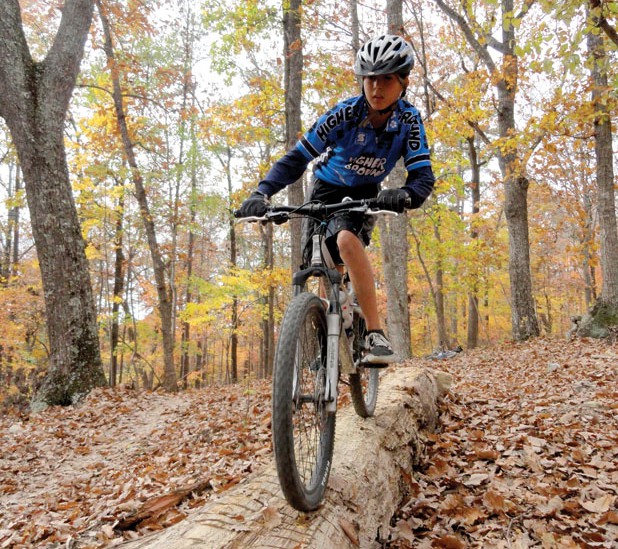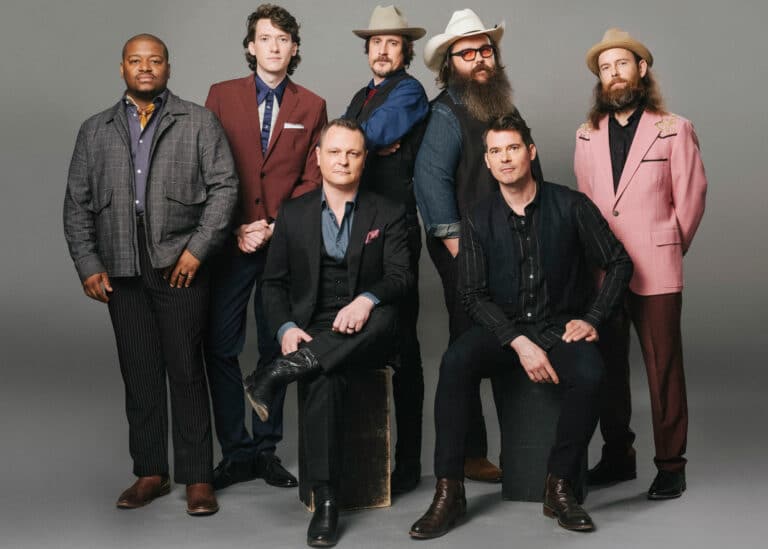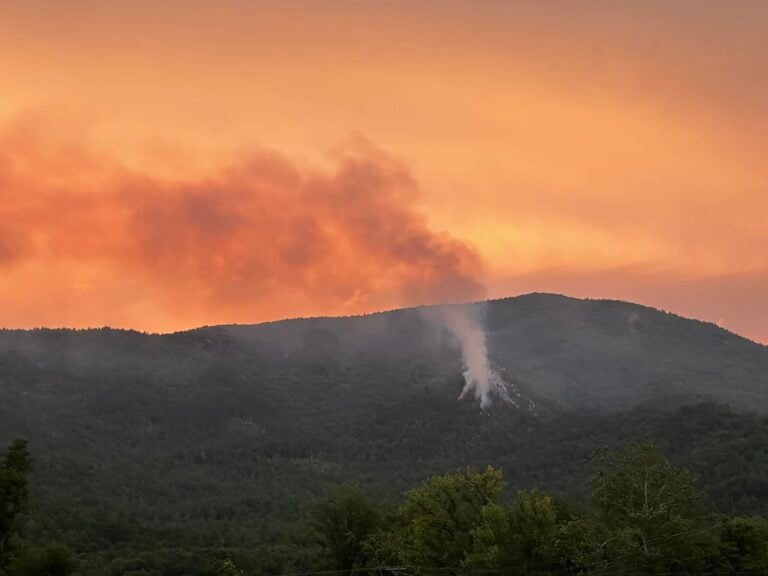Trails in North Carolina’s Uwharrie National Forest are a mountain biking mecca.
Three years ago, Uwharrie National Forest was slated to be the next big thing. The International Mountain Bike Association (IMBA) tapped this national forest, in the middle of North Carolina, to be one of the country’s next great mountain bike destinations. The advocacy group chose the site as one of only five inaugural Ride Centers, an ambitious trail and infrastructure creation project that was intended to serve as a regional hub of fat tire activity and a model for future trail development.
Three years and one economic crash later, IMBA’s original Ride Center concept has been scrapped, along with their lofty plans for Uwharrie National Forest. Local mountain bikers, however, haven’t given up. They recently finished phase one of the original Ride Center plan, adding six miles of singletrack to Uwharrie’s Wood Run Trail system, and are forging ahead with the original goal of turning Uwharrie into a bonafide riding destination, with or without the help of IMBA.
“I want Uwharrie to become a household name like Moab. Maybe that’s pie in the sky, but that’s the idea,” says Brian Bison, an Albemarle mountain biker who was instrumental in convincing IMBA to consider Uwharrie for its inaugural Ride Center program. “It’s hard to believe nobody had capitalized on the terrain Uwharrie had before this project.”
What Uwharrie has is the oldest mountain range in North America–ancient peaks weathered down to more molehills than mountains. Summits top out around 1,000 feet today, but don’t let the lack of elevation fool you; the existing Wood Run Trail system has chops. The trails are packed with frequent elevation changes over naturally rocky terrain for a surprisingly technical ride. Bison estimates the forest and adjacent Morrow Mountain State Park could hold a 60-mile system.
“Uwharrie had great potential for a Ride Center, and still does,” says Mark Eller, director of communications for IMBA. “But the original plan had IMBA building these Ride Centers from scratch. It was an overly ambitious model that was dependent on local businesses loving the idea so much that they’d put up money to achieve it.”
IMBA created a multi-phase development plan and helped start a local SORBA chapter that began looking for contributions…then the economy crashed, and IMBA’s Ride Center concept was scrapped nationwide.
“Of the original five proposed Ride Centers, Tamarack Resort is the biggest tragedy, and a perfect example of how the original concept fell apart because of the economy,” Eller says. Tamarack, in Idaho, was slated to become the U.S.’s answer to Whistler. “The resort was funded by a European bank that defaulted,” Eller says. “The gate is still locked to this day.”
The situation in Uwharrie wasn’t so dire. The Tarheel Trailblazers, a well-organized bike club in nearby Charlotte, recognized Uwharrie’s potential as a hub of mountain biking, and took over the Ride Center project, securing the matching funds necessary to use a $76,000 Recreation Trails Program grant and infusing local businesses with a newfound enthusiasm for the massive trail project. The Trailblazers completed the first phase of the original Ride Center project, building roughly six miles of brand new singletrack and completely rehabilitating an existing loop. Uwharrie’s Wood Run Trail system now boasts 15 miles of purpose-built singletrack, and the club is already looking forward to the next phase of development, which could include gravity trails and more cross country-minded singletrack.
“What we have now is fun trail with lots of flow. There isn’t any huge elevation, but it’s rugged trail,” Grover says.
As for IMBA’s Ride Center project, it too has received a makeover. The organization recently announced a new crop of Ride Centers along with a new paradigm for how the destinations are chosen.
“The biggest difference with Ride Centers now is that IMBA isn’t building them. They’re already on the ground,” says Eller. “The ultimate vision is the same, with an epicenter of riding with trails for all skill levels and types of biker, along with a supporting infrastructure. But instead of building these Centers, IMBA will vet and approve existing systems, giving them our stamp of approval.”
Ride Centers will be designated every year, much like IMBA’s coveted Epic trail designations. While Uhwarrie didn’t make the cut for the first crop of Ride Centers, Eller says there’s still a chance for the forest to find a home on the list in the future.
The Trailblazers are still using the Ride Center concept to guide future development, but aren’t holding their breath for IMBA’s pat on the back. “We’ve got the traction to continue development,” Grover says. “Will it be a Ride Center? I don’t know. Does it need to be? I don’t think so. An exciting trail will bring riders, regardless of a designation.”
The New Ride Center
The new IMBA Ride Center is much like the old IMBA Ride Center. It’s a large-scale mountain bike facility with terrain for every type of rider, a quality bike shop, and a social hub for mountain bikers. Two Southern trail hubs were recently knighted by IMBA as Ride Centers under the new guidelines.
Harrisonburg, Va. Virginia’s mountain bike mecca was honored by IMBA because of its wide variety of trails (from beginner parks at Rocktown and Hillendale to full blown Epics like the Southern Traverse), a progressive bike club (Shenandoah Valley Bicycle Coalition), and a litany of races (the Fall Six Pack series and Shenandoah Mountain 100). Check out more at svbcoalition.org.
Santos, Fla. The only one of the original five Ride Centers to make it into the new crop of designees, Santos offers flowing singletrack, a bike skills park, and massive freeride terrain with opportunities for big air. Check out more at omba.org.








